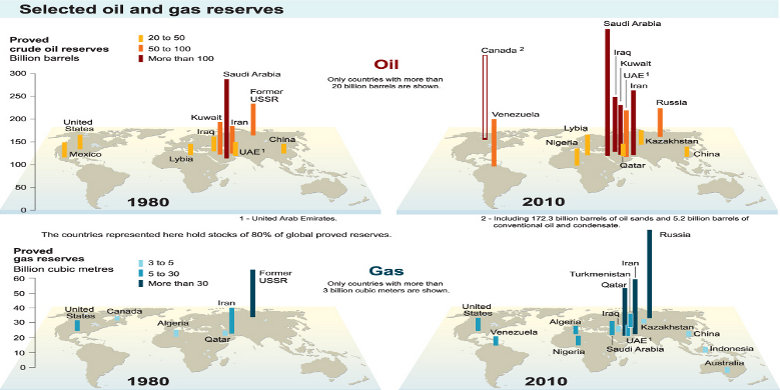To help clarify the different resources and reserves definitions used in analyzing oil and gas companies, this page serves as a reference for understanding the relevant terminology. The Society of Petroleum Engineers (SPE), the American Association of Petroleum Geologists (AAPG), the World Petroleum Council (WPC) and the Society of Petroleum Evaluation Engineers (SPEE) have agreed upon the following resources and reserves definitions as published in the Petroleum Resources Management System:
Prospective Resources
Estimated quantities of hydrocarbons from undiscovered accumulations based on indirect evidence (e.g., the oil or gas structure identified has not yet been drilled).
Contingent Resources
Potentially recoverable quantities of hydrocarbons from known accumulations not currently considered commercially recoverable due to one or more contingencies.
Reserves
Estimates of hydrocarbon volumes anticipated to be commercially recoverable from a given date forward, under existing economic conditions. Reserves must satisfy four criteria: discovered, recoverable, commercial, and remaining (as of the evaluation date).
Reserves can be further classified into:
Proved Reserves
Can be estimated with reasonable certainty to be economically recoverable from known reservoirs under defined economic conditions, operating methods, and government regulations.
Undeveloped Reserves
Quantities of hydrocarbons expected to be recovered through future drilling.
Unproved Reserves
Reserves based on geological and engineering data similar to that used in estimating proved reserves, but with technical, contractual, or regulatory uncertainties precluding classification as proven. Unproved reserves are sub-classified as probable and possible reserves:
- Probable Reserves: Additional reserves less likely to be recovered than proved reserves but more certain to be recovered than possible reserves.
- Possible Reserves: Additional reserves less likely to be recoverable than probable reserves.
Further classifications include:
- 1P Reserves: Total of proven reserves.
- 2P Reserves: Total of proven and probable reserves.
- 3P Reserves: Total of proven, probable and possible reserves.
- P10 Reserves: Possible reserves which have at least a 10% probability that the quantities recovered will be equal to or greater than the estimate.
- P50 Reserves: Probable reserves which have at least a 50% probability that the quantities recovered will be equal to or greater than the estimate.
- P90 Reserves: Proven reserves which have at least a 90% probability that the quantities recovered will be equal to or greater than the estimate.


